An anthology of Tom Johnson’s string quartet composititions, from Formulas (1994) to Combinations and Tilework (both from 2003); also included is Four-Note Chords in Four Voices (2009). Available either as a CD or as a high-quality digital download.
As a pioneering critic for the Village Voice in the 1970s, Tom Johnson was an eyewitness to Minimalism in all its early variety. Lessons from that immersion have always been apparent in his own compositions. But though his music can invite comparison with the likes of Philip Glass and Steve Reich, Johnson has his own gift for making you feel each change in a field of patterns as it happens. And he has a fine sense of humor, too — as in pieces like “Failing: A Very Difficult Piece for Solo String Bass.”The quiet clarity of his mathematically rigorous approach has also endeared him in recent years to the Wandelweiser school of composers and performers. A new album devoted to his work, performed by the Quatuor Bozzini, shows off this dreamier side of Johnson, as in the fifth and final movement of “Combinations for String Quartet.” Unlike earlier sections of that work, the finale manages to balance didactic clarity with transporting gracefulness. That equilibrium is heard throughout the recording — particularly in a piece from his “Tilework” series and in the gorgeous “Four-Note Chords in Four Voices.”
Tom Johnson (Greeley, Colorado, 1939) is one of the essential figures of the minimalist music scene. As a composer, he was a student of Morton Feldman and was also the author of the first minimalist opera in history, The Four-Note Opera, composed in 1972. As a journalist, he worked for ten years, between 1972 and 1982, at the influential (at the time) Village Voice in New York. In fact, he prides himself on being one of the first to refer to the musical current that was sweeping the alternative spaces of downtown Manhattan as “minimalism”, although he used the term on 30 March 1972 in an article entitled The Minimal Slow-Motion Approach, which talked about a concert at the Presbyterian Church in Greenwich Village, with works by Stuart Marshall, Mary Lucier and Alvin Lucier. Nothing to do with Reich or Glass, whom he referred to as “repetitive”.
As a composer, one of his defining characteristics is absolute conceptual simplicity and a Cageian, Duchampian humour. In fact, Johnson has come to regard himself not as a composer, but as a “finder of objects”, in the sense of Duchamp’s “found object”. Just a few weeks ago, the Canadian record label Distribution Ambiances Magnétiques Etcetera (DAME) released Tom Johnson: Combinations, an album in which the Bozzini quartet performs a series of pieces dating from different periods of his production: Formulas for String Quartet (eight short pieces, from 1994); Combinations for String Quartet (another five pieces, from 2003, lasting between four and six minutes), Tilework for String Quartet (also from 2003, the longest piece on the album, at just over nine minutes) and Four-Note Chords in Four Voices (fifteen short pieces, around a minute, from 2009).
Having said that Johnson (who lives in Paris since 1983, married to the Spanish conceptual artist Esther Ferrer) is driven by humour and conceptual music, this succession of pieces offers exhaustive combinations and permutations of explicitly titled compositions. Combinations for String Quartet, Johnson himself explains, “contains five movements, and each of these contains all the combinations of something. As usual, I wanted the music to know what it was doing, to be correct and complete in a rigorous sense, and this is one way of achieving this. The theory of combinations is a totally explored mathematical discipline, as we have known for more than a century how to calculate all kinds of combinations and probabilities, and how to prove all of this. So what I say about my composition can not have fundamental significance for mathematics. I can, however, demonstrate that new questions arrive when one wants to go inside some set of combinations, to see how they come together, to observe the many symmetries within them, to find the best sequence for them, to consider how they might sound, to turn them into music.”
Similarly, Four-Note Chords in Four Voices is what its name suggests: four-note chords in four voices, and Formulas for String Quartet is also easy to perceive: even when the music flows too quickly to count the notes and analyse exactly what is going on, you notice the strict, mathematical logic with which it has been composed. We may recall that Johnson is the author of The Chord Catalogue: All the 8178 chords possible in one octave, which is exactly that: a “listing” of the 8,178 chords possible in one octave, from two-note chords to the absolute cluster.
Tilework for String Quartet, likewise, is a collection of compositions in which individual tiles/rhythms fit together in non-simultaneous musical sequences, often filling all available points of a line or loop. It sounds simple, but it is not. What is important when listening to the record is that Quatuor Bozzini manages to make the result sound warm and lively outside of the mathematical rigidity that characterises it. Johnson himself has also explained that “listeners do not need to master counterpoint to appreciate a Bach fugue”.

An excellent new recording of Tom Johnson’s well-known 1976 piano piece beautifully played by Keiko Schichijo, alongside with an earlier and lesser-known shorter piece.
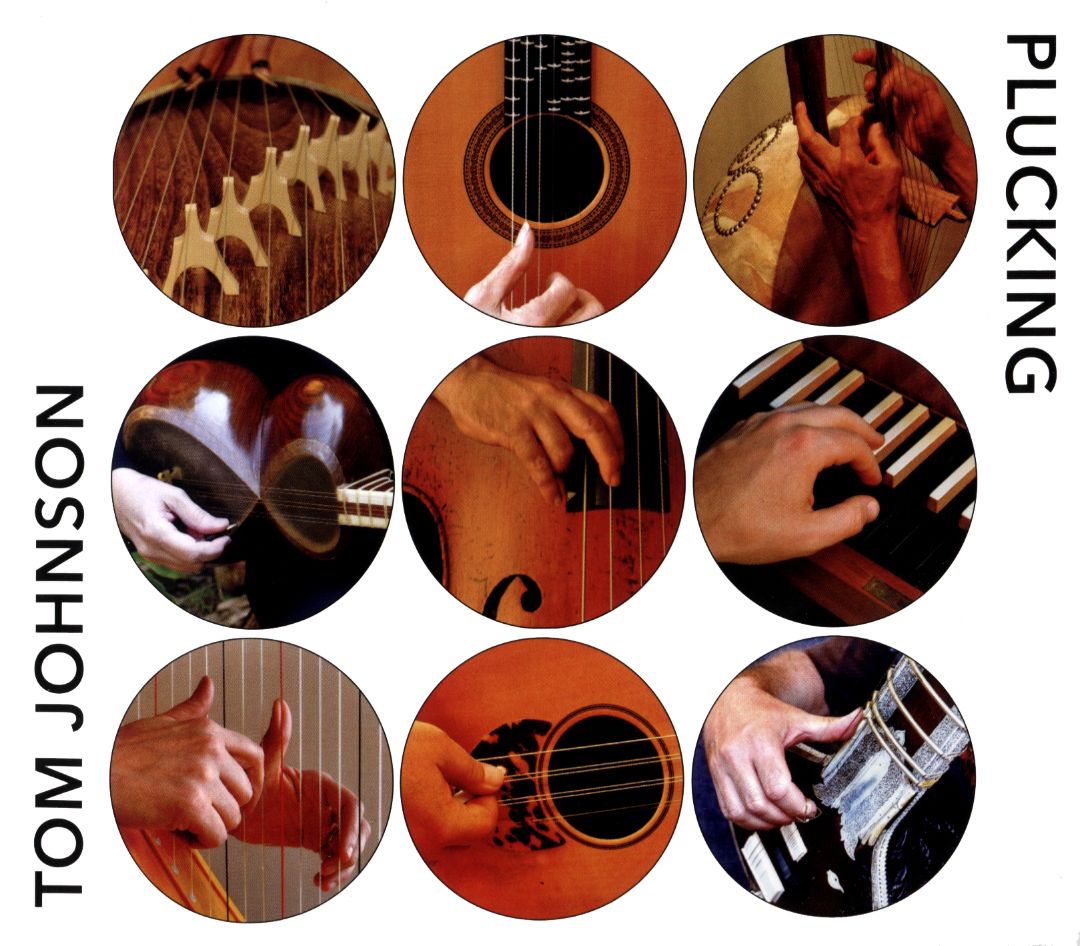
Just Strings, also known as the Partch ensemble, is an award-winning music ensemble specialized in contemporary American music. Since their formation in 1991 as a guitar, harp, and percussion trio to perform the music of Lou Harrison and Harry Partch, they have gone on to commission and premiere works by John Luther Adams, Mamoru Fujieda, Larry Polansky, James Tenney and others.
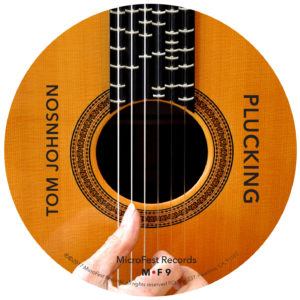
Track list:
Rational Melodies – in rational tunings* (1982) [17:11]
Plucking
for nine different plucked instruments (2015) (26:27)
Failing: a very difficult piece for solo double bass (1975) (7:57)
Doublings for Double Bass (1980)* (22:36)
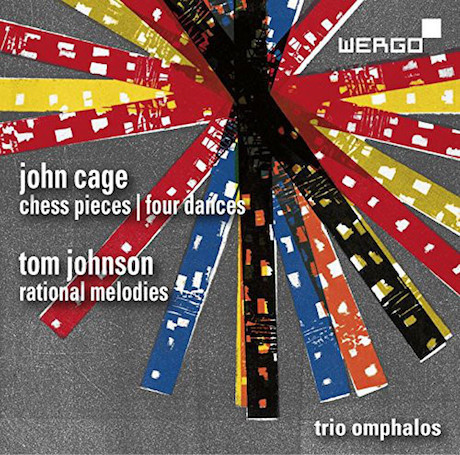
John Cage: Chess Pieces Arrangement: Trio Omphalos
Tom Johnson: Rational Melodies for any instruments. Arrangement: Trio Omphalos
John Cage: Four Dances
Tom Johnson: Counting Duets No. II
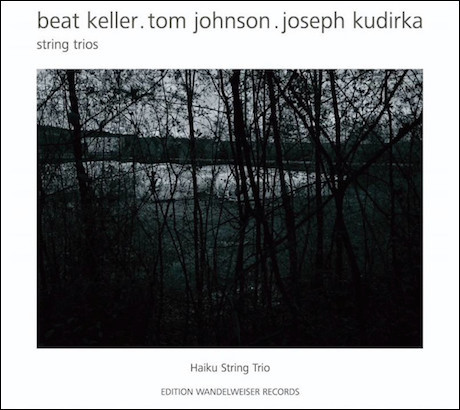
This record includes (12, 3, 2) and (6, 3, 2) from Networks by Tom Johnson and other trios by Beat Keller and Joseph Kudirka.
Haiku String Trio:
Julia Schwob (violin)
Davis Schnee (viola)
Nicola Romano (cello)
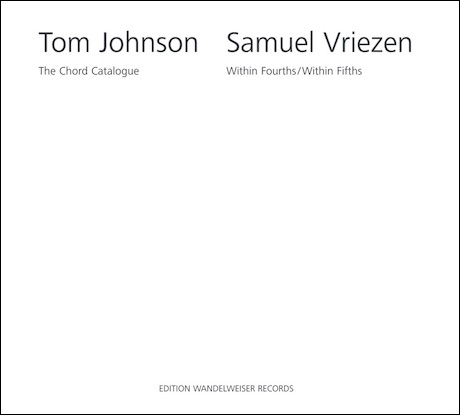
Playing over eight thousand chords in half an hour is no problem for a computer. But when done by a human pianist, it’s a breakthrough in piano technique. After ten years of work, composer/pianist Samuel Vriezen managed to record his remarkable version of Tom Johnson’s 1985 cult classic, The Chord Catalogue. Together with a major solo piece by Vriezen himself, it is now available on CD from Edition Wandelweiser Records.
The Chord Catalogue is a simple idea. Johnson, a composer known for his playful mathematical experiments in music, calls the piece a ‘list’ rather than a composition. It consists of all chords you can play using the thirteen keys of one octave, from the 2-part combinations up to the 13-tone cluster. In between, a weirdly mesmerizing music of surprising vivacity unfolds. Simple as the idea is, the musical result is rich and complex.
In 2002, Vriezen was the first pianist other than Johnson himself to take the piece seriously as a virtuoso concert work. Playing the piece at more than twice Johnson’s speed, he has managed to make more audible the beauty and excitement hidden within this rigid concept. This requires a whole new kind of piano technique and a new way of thinking about rhythm, melody and color.
Johnson loved Vriezen’s performances, and the two composers became friends. Vriezen dedicated his Within Fourths/Within Fifths, composed in 2006, to Johnson. It responds to Johnson’s musical ideas, but applies them within a sound world of a very different quality. Here, similar simple principles of rigid construction yield highly lyrical meditations of chord progressions, with organically expanding and contracting melodic patterns emerging from its gradually transforming world of colors.
In 2012, with the help of friends and of Johnson himself, Vriezen embarked on a highly successful crowd funding campaign, with the goal of recording his unique rendition of The Chord Catalogue besides the piece that he wrote in homage to the older composer. Hundreds of music enthusiasts worldwide offered their support for the project. In less than two months, Vriezen raised the money to rent a hall and one of the best pianos in the Netherlands. The result, a disc pairing strong conceptual unity with widely contrasting atmospheres, can be heard now.
Review (German): Neue Zeitschrift für Musik 2014/04
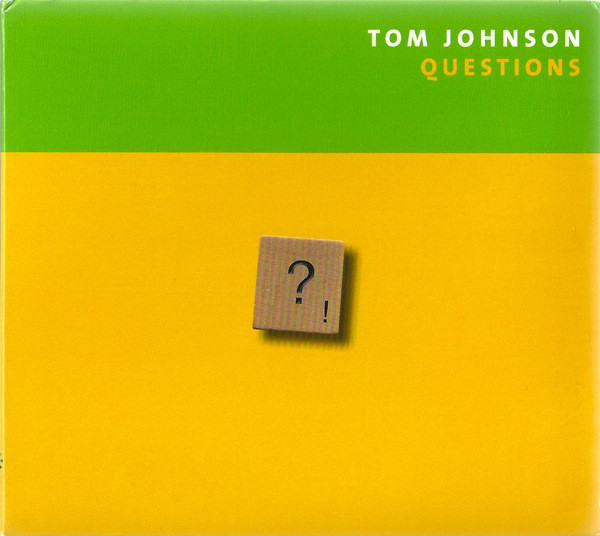
˝Analytical and austere, but enlivened with a sly wit” […] ˝an endearing (or irritating?) self-portrait of a mildly perverse composer.˝
(John Cowley in The Wire, June 2013)
Review (German): Neue Zeitschrift für Musik 2014/01

For his 70th birthday concert at Orgelpark in Amsterdam in 2010, Johnson studied the note C in all the octaves and all the registers of the four pipe organs in this unique concert hall and wrote this one-note piece, his only drone music.
Orgelpark Color Chart is a limited and hand numbered edition of 500 copies in an elegant and original design by the recently formed edition Mazagran Records. Digital version available in Bandcamp.
Credits:
Organ [Molzer Organ] – Jeroen Koopman
Organ [Sauer Organ] – Geerten Van De Wetering
Organ [Van Leeuwen Organ] – Dorien Schouten
Organ [Verschueren Organ] – Hans Van Haeften
Engineer [Sound Engineer] – Bert Van Dijk
Photography By – Sonja Duimel
Producer – Riccardo Dillon Wanke
Recorded live at Orgelpark, Amsterdam, Saturday, March 13th, 2010.
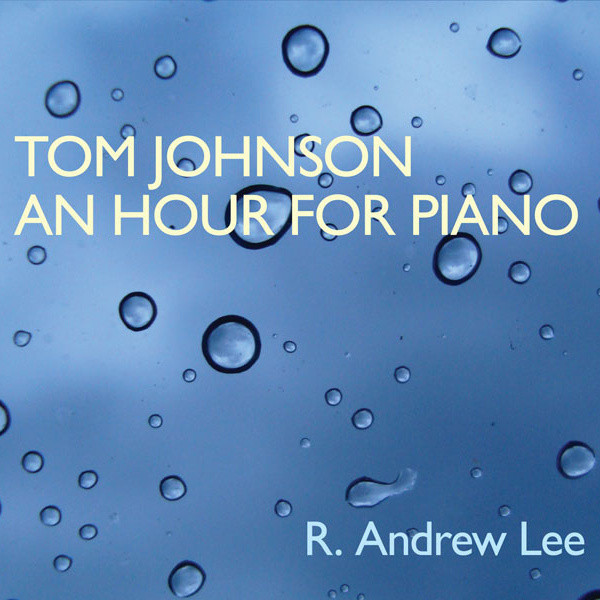
An early minimalist piano piece (1973) that still maintains its freshness today. The interpretation of R. Andrew Lee is calmer than the one by Frederic Rzewski and comes out at almost exactly 60 minutes.
Published by Irritable Hedgehog, the publishing imprint of David D. McIntire.
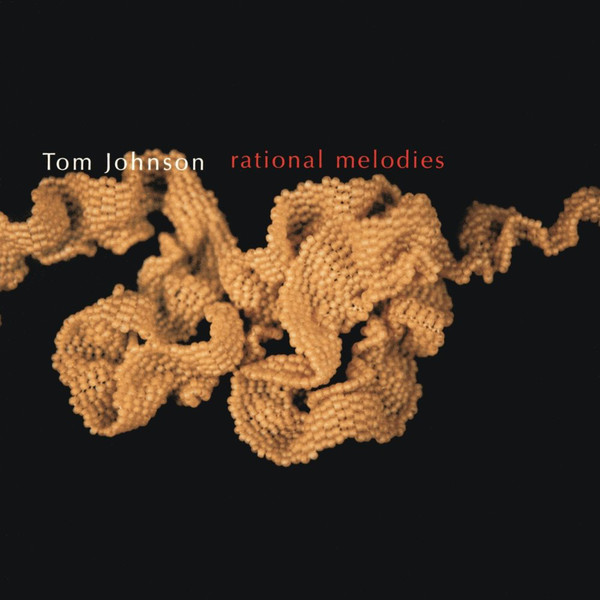
Dedalus: Didier Aschour, guitar, music director; Amélie Berson, flute; Eric Chalan, bass; Denis Chouillet, piano; Thierry Madiot, trombone; Pierre-Stéphane Meugé, saxophone; Silvia Tarozzi, violin; Fabrice Villard, clarinet; Deborah Walker, violoncello
“I am particularly pleased, because the result is so different from the solo flute recording of Eberhard Blum and the solo clarinet recording of Roger Heaton. It is not just another interpretation, but a case where interpreters have added so much insight to the music that the music itself has grown. When I was composing this music around 1982, I really thought I was simply writing melodies, but now these little pieces, though remaining melodies, have become something much more, something I would never have imagined. They have become what you hear on this CD.” –Tom Johnson
“Tom Johnson (b. 1939) belongs to a generation of American composers who founded musical minimalism. We know that this term was first applied to the visual arts, notably to Donald Judd, Robert Morris, and particularly Sol LeWitt, whom Johnson recognizes as an influence. However, it wasn't the repetition in itself that interested him, but rather the idea of music as a process. Steve Reich applied this idea brilliantly in his phase pieces. But after 1975, while the same Reich distanced himself from the radicalism of his first works, and younger American composers came out with music that was lusher, more expressive, even sentimental, Johnson insisted on the unrelenting rigor of formalized processes. The Rational Melodies, composed in 1982, may be regarded as the outcome of this research, first of all by their sheer quantity, but also by the fact that they summarize brilliantly and clearly procedures from the past, present, and future, which together characterize his work: combinations of cycles of different lengths (I, IV, XI, XVII, XVIII), permutations (VII, X), the paper-folding or ‘dragon’ formula (II, XIX), other automata (XVI, XX), or self-similar structures (XIV, XV).” –Gilbert Delor
A guided tour by Tom Johnson of some of his process-based works with examples taken from the CD.
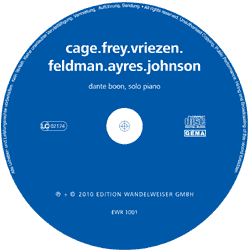
“Pianist and composer Dante Boon often programs his recitals as webs. He likes to put compositions of great diversity in style and technique side by side. (...) For example, Tom Johnson's Tilework for Piano, probably the most austere piece in this collection, is a systematic exploration of the ways in which a fifteen-beat phrase can be covered by a simple rhythmical three-note pattern that appears at five different speeds. Those five layers by themselves have a percussive quality. But in his performance, Dante is more interested in the surprising melodic figures that result from different combinations of the layers, and his articulation and phrasing stress the melodic aspect over the separation of layers.” –Samuel Vriezen
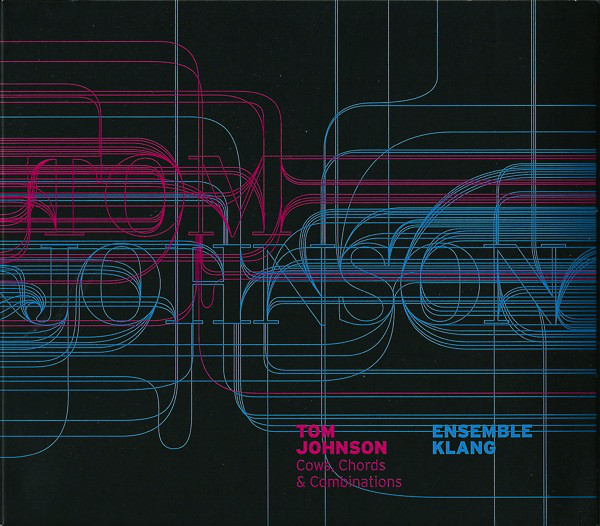
In Cows, Chords and Combinations, Ensemble Klang, a fine young septet based in The Hague plays some well known Rational Melodies, the often performed Narayana’s Cows, the less often performed 844 Chords and the brand new Vermont Rhythms, written specifically for Klang, following rhythms calculated by mathematicians at the University of Vermont.
The fold-out CD includes a comprehensive 16-page booklet with detailed liner notes by Samuel Vriezen, photographs, multiple score samples and biographies. The outstanding cover design is the work of Studio Duel.
Heiko Geerts, reeds
Erik-Jan de With, reeds
Anton van Houten, trombone
Joey Marijs, percussion
Pete Harden, guitars
Saskia Lankhoorn, piano
Special guest performer: Keir Neuringer, voice
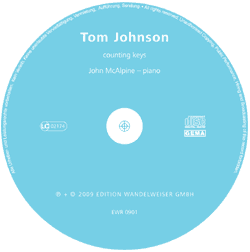
Counting Keys, Organ and Silence for Piano, Tilework for Piano and Block Design for Piano. Played by John McAlpine
Review (German): Neue Zeitschrift für Musik 2010/01
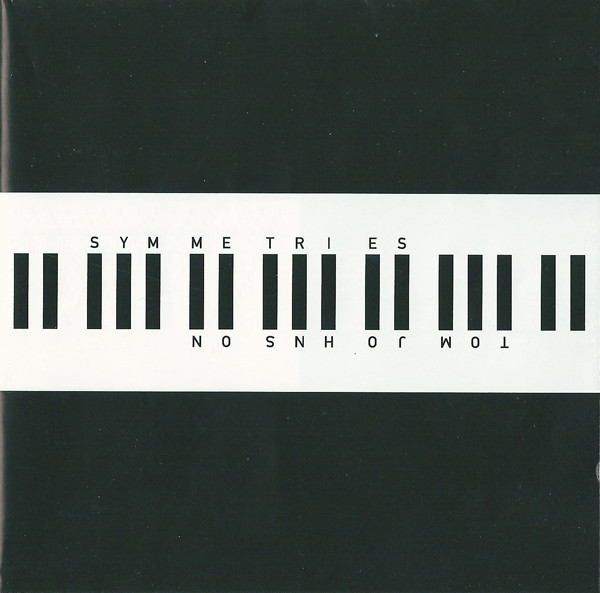
“How does visual symmetry relate to musical symmetry? In 1980 composer Tom Johnson, known for his playful minimalist structures, produced 49 perfectly symmetrical drawings made out of musical symbols. These he then turned into a set of charming crystalline 4-hand piano pieces, each a tiny, perfect musical world. In this first recording, duo Oei and Vriezen bring these Symmetries alive with zest, clarity and a fine sense of color. The notes include the original drawings.”
Dante Oei, piano
Samuel Vriezen, piano
Review: Sequenza21
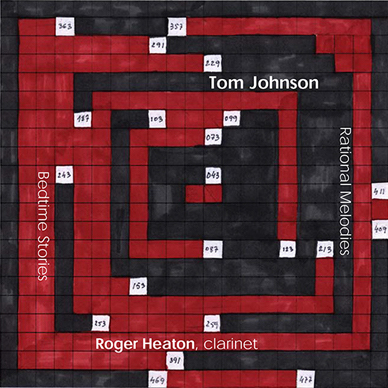
Roger Heaton, clarinets
From metamkine.com:
“I want to find the music, not to compose it”. This statement, one of Tom Johnson’s most effective, explains the general sense of the music of this CD and of most of Tom’s musical research. The Rational Melodies are one of the most important instrumental cycles of the “new music” repertoire. Here we have the application of rational methodology to musical composition, using additive operations, combinations, permutations, substitutions, inversions and other logical processes as directed by the ear of a passionate musician. “I am certainly not the first person to work with logical sequences and formulas,” says Johnson. But we, the listeners, must thank him for letting us hear clearly (and musically) this rationality. The Bedtime Stories can be heard as delicate, peculiar musical “nursery rhymes”; it’s a little 12-story compendium of sound that takes us on an amazing journey in the world of numbers. Roger Heaton is, in this disc, simply fantastic. It’s hard to find a better word to describe the sensations that surface as we listen to him. The British clarinetist give us the essence of Johnson’s music. In his interpretation rationality becomes joy, inspiration, strength; melodies appear in chic classical clothes and his virtuosity (always needed by the score) perfectly adheres to the scores. And there is also the elegant reading of the texts of the Bedtime Stories, with that perfect English accent and that clarinet that seems coming from the pages of a fairy-tales (and numbers) book. Esther Ferrer is a multi-faceted Spanish artist, living in Paris for years, but traveling all over Europe (much in Italy) and in the rest of the world. Presenting performances, installations, photographic works, she is a great exponent of “total art” (she was in the group ZAJ from 1967 until the group discontinued in 1996). For this CD cover, she offers one of her visual structures following the prime number series, an aspect of her work that goes particularly well with the rational processes of her husband, Tom Johnson. A particular thanks to Esther for her kind permission to allow us to use this image.
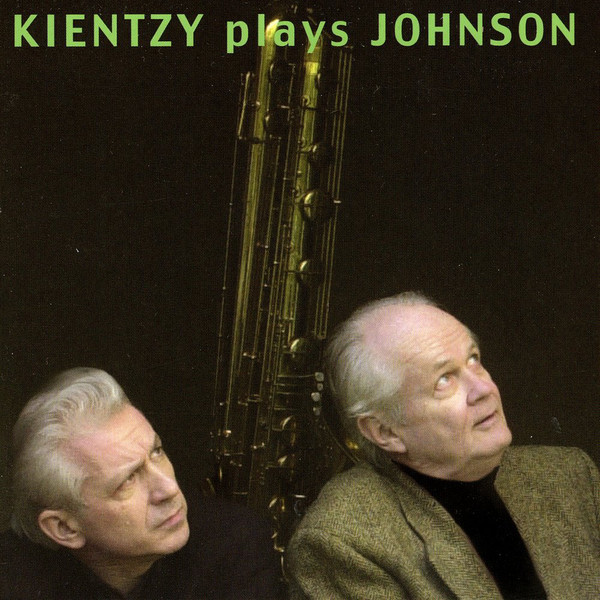
Daniel Kientzy, saxophones; Meta Duo; Tom Johnson, narrator
In Kientzy Loops, the accompanying loop is a mix of six alto saxophones played in continuous blowing, while the principal lines are played on alto saxophone (except for the third section, played on baritone). The piece, premiered at the auditorium of the ADAC in Paris, was awarded a French national prize in the Victoires de la musique as the best piece of contemporary music for the year 2000.
We are indebted to our friend Marc Chemillier for
La Tortue de mer.
As a mathematician Chemillier became interested in the unique geometry of
drawings made in the sand by the people of Vanuatu in the South Pacific.
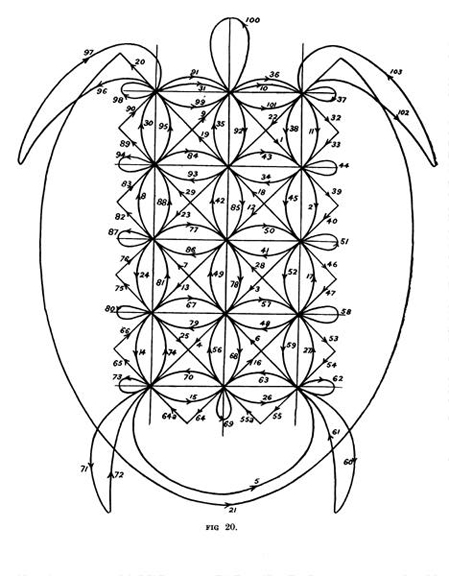
This (turtle) drawing, and there are many others, consists of a single line
with a total of 103 turns, and one must draw the sequence so that the symmetrical
form comes out just right. The drawing is systematic, and it also makes a lovely
logical form when translated into music. We decided the sequence would sound best
played on the contrabass saxophone, tuned an octave lower than the baritone, a
rare instrument with heavy notes that seem to mimic the embarrassing slowness of
these giant sea creatures.
Narayana's Cows, inspired by an Indian mathematician of the 14th century, and playable on any combination of instruments, is written on three staves: the complete melody, the reduced bass melody, and the drone. The present multi-track saxophone version is probably as rich and energetic as any of the large ensemble versions. The melody is played by three overdubbed sopranino saxophones in unison, the bass line is played by three baritones, and the drone is played by three altos.
In each of the four Infinite Melodies, the music follows a logical sequence requiring each subsequent phrase to become longer and longer, reaching out toward infinity. Since the four melodies are independent pieces, it is not necessary that they be played in the written sequence. In this case the interpreter ordered his four interpretations according to their contrast and durations, so that the CD ends with Infinite Melody N°1. Here the music contains longer and longer silences, finally ending with a silence so long that it seems to dissolve into infinite silence as the CD player stops turning.
Review in Paris Transatlantic.

Wesley Roberts, organ
“Silence” is the name of a book by John Cage, and many composers talk about the importance of silence in music, but one doesn’t actually hear much of it in the classical repertoire, or any other repertoire. In fact, silences longer than three seconds are extremely rare in all kinds of music. Early in 1999 I had some ideas for short pieces that could sustain the interest despite the fact that they were mostly silence. After I had written these pieces, I found another way of writing music that permitted long and frequent silences, and then another, and another, and before long I was devoting all my time to a collection of organ pieces. My music had always been minimal in some way, but this was quite another way, and now I began really listening to the silence, or rather to the silences, noting how different one could be from another, and enjoying the freedom that silence gives to listeners. At first I had a rule that each piece must be at least 3/4 silence, but later I decided that I would simply permit as much silence as possible, without allowing the music to actually stop. —Tom Johnson
Wesley Roberts (b. 1953) is Professor of Music at Campbellsville University in Campbellsville Kentucky. He has presented concerts as a pianist and organist throughout the United States and in France, England, Denmark, the Netherlands, Switzerland, and the Czech Republic. He is the author of articles and reviews in British, Dutch, and American journals, and has done extensive research on the French and Dutch music of the early to mid-20th century. He has frequently performed individual pieces from Organ and Silence, and presented the entire set of 28 pieces, a concert with over two hours of music, in Nerinx Kentucky on April 9, 2001. This recording, engineered by Ronald E. Stopher, was also made in the spring of 2001 using this same organ.
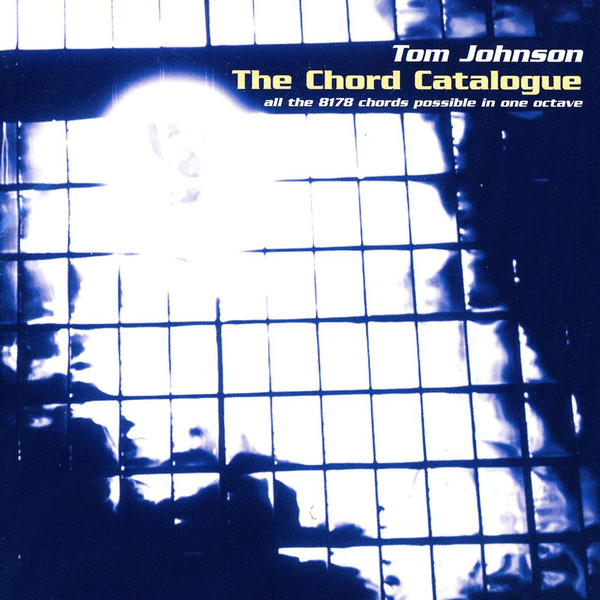
Piano [Bösendorfer] – Tom Johnson
“Extreme and, one would think, extremely simple. A lesser man would have arranged those 8178 chords in some symphonically meaningful, or else quasi-random order, but Johnson proceeded methodically up the chromatic scale from two notes at a time, three, four, so on to 13....By the time we reached 10-note chords, the information overload was such that differences were hardly perceptible, a situation reminiscent of serial music. Far from being heavy-handed minimalism, The Chord Catalogue was a pointed lesson in music history and the relativity of perception.” –Kyle Gann, Village Voice
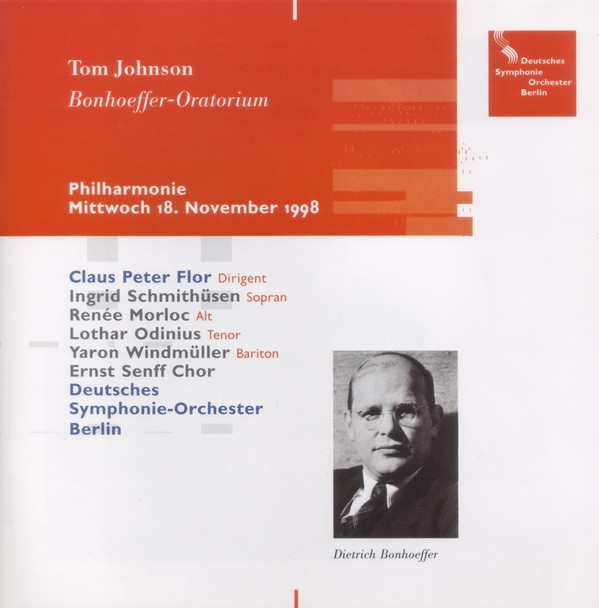
Credits:
Baritone Vocals – Yaron Windmüller
Choir – Ernst Senff Chor
Chorus Master – Sigurd Brauns
Composed By – Tom Johnson
Conductor – Claus Peter Flor
Mezzo-soprano Vocals – Renée Morloc
Orchestra – Deutsches Symphonie-Orchester Berlin
Soprano Vocals – Ingrid Schmithüsen
Tenor Vocals – Lothar Odinius
Text By – Dietrich Bonhoeffer
Not for sale, but available to libraries
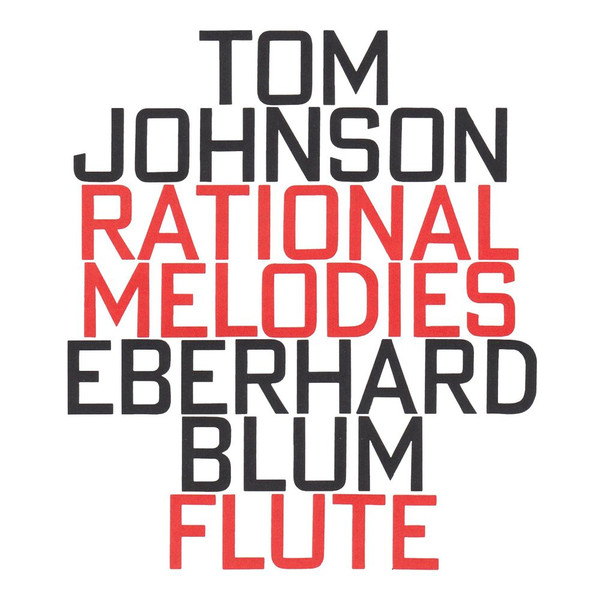
Eberhard Blum: Piccolo Flute, Flute, Alto Flute, Bass Flute
Out of print.
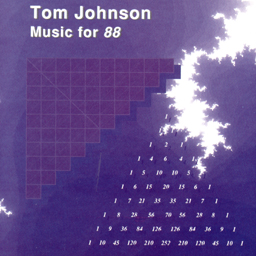

Six pieces for piano, recorded by the composer for Experimental Intermedia with texts in English.
| Contents |
| 1. Eighty-Eights (5:20) |
| 2. Mersenne Numbers (7:45) |
| 3. Multiplication Table (7:08) |
| 4. Pascal's triangle (16:32) |
| 5. Euler's Harmonies (5:35) |
| 6. Abundant numbers (17:50) |
SIMPLICITY AND CLARITY HAVE ALWAYS BEEN AMONG MY CHIEF concerns as a composer. This is probably largely a reaction to the contemporary music I heard as a student in the 60's, which seemed to me to be mostly concerned with complexity and obfuscation. The search for clear, simple, elegant statements led me to a number of different kinds of reductive or minimalistic music, many of which involved counting and numbers, and went even to the point of Counting Languages, which became pure spoken number, with hardly any music left at all.
By 1987, it became obvious that I would understand a little better what I was doing if I knew some mathematics beyond what I had learned in high school algebra. So I began reading some math books, particularly old classics of number theory by Pascal, Fermat, Euclid, and others, and these sources suggested musical structures somewhat more complicated than those I had used before. I wanted to use them, and I wanted them to be clear, and sometimes the only way to be clear is to explain things, and sometimes the explanation is so important that it needs to become part of the music, and that is more or less what happened with the Music for 88.
The result is blatantly didactic, and this is fine as far as I am concerned. The joy of learning can be as great as the joy of any artistic experience, and if listeners here learn something about abundant numbers or Mersenne numbers or tiling patterns, as well as simply hearing some music, that seems fine to me, too.
-Tom Johnson, Paris, 1988
Tom Johnson loves counting, systematic calculation, and predictability. He is the master of a logical music, the essence of which involves the complete revealing of its premises. Through the strategy of tautological self-reference, and by avoiding any sort of mystery, its apparent dry seriousness, all by itself, can turn into clarifying wit and rather amazing insight.
-Matthias Osterwold, Berlin, 1988
Through various stages of his compositional development, Johnson's main concern has been music wich proceeds in predictable ways, and which thus completely avoids the mysterious or the secret. This renunciation, even more radical in recent years, with the use of strict rational systems, does not, however, threaten the artistic quality of the work. There is always a tension between the transparent logic of the structure of the piece and the material that generates it.
-Veniero Rizzardi, Padua, 1984
Tom Johnson likes to push austerity to the ultimate, and with his bare materials, he enjoys demonstrating that a new complexity arises there where we thought we had reached the ultimate simplicity.
-Gérard Condé, Paris, 1985

About 60 minutes of piano music in the composer’s early minimal style, played by Frederic Rzewski. The music was composed in 1973 and first issued by Lovely Music as an LP. Now newly available in CD format. The album notes include Tom Johnson's, “Program Notes to be read while hearing An Hour for Piano,” and an essay by Kenneth Goldsmith, “An Hour of Tom Johnson.” Lovely Music (LCD1081) 12€.